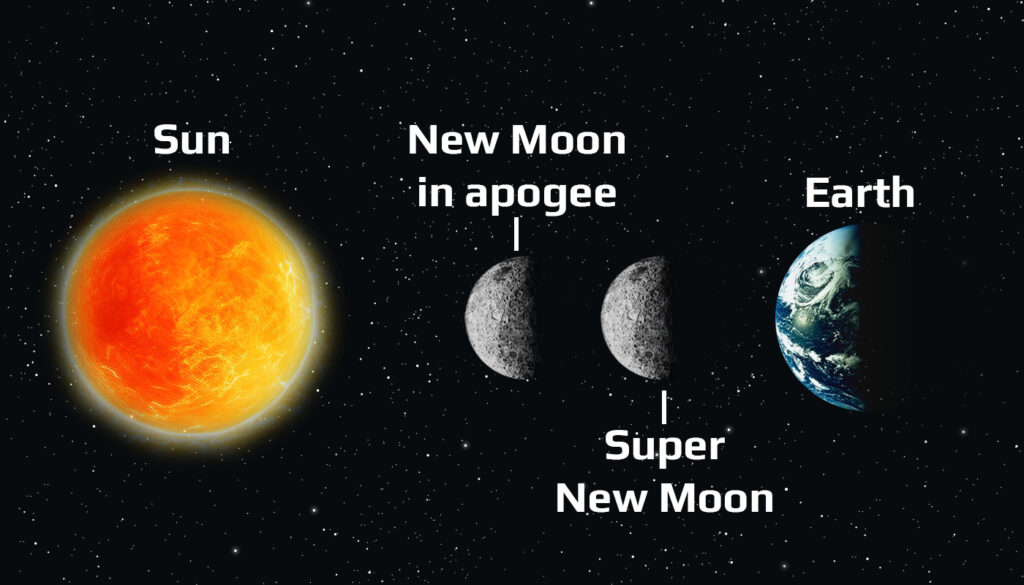The term “supermoon” has been quite common in the media lately. This is how they mark the full moon coming near perigee, the point closest to the Earth in the lunar orbit. At the same time, its opposite, the “super new moon,” is almost never mentioned. It’s a pity: this year this phenomenon will occur on February 10, Chinese New Year’s Day.
The reason for such inattention to the “super new moon” is easy to understand: if during a supermoon we can see our natural satellite in all its glory, then in the opposite phase it is in the sky near the Sun and is often inaccessible for observation. So, when do we expect a super new moon this year and what does it mean for our planet?
A supermoon occurs when the Moon passes closest to the opposite sun point of the celestial sphere simultaneously with the passage of perigee. The super new moon will obviously come when it is at perigee at the same time as it gets as close as possible to the imaginary line connecting the centers of the Earth and the Sun. Ideally, the latter will partially or completely disappear behind the lunar disk — a solar eclipse will occur.

Since nothing completely simultaneous exists in nature, most journalists decided that all phenomena with the prefix “super” are considered such only when the distance between the centers of the Earth and its moon does not exceed 360 thousand km. This will happen three times this year during the new moon. For the first time — on February 10, when the beginning of a new cycle of lunar phases will “kick off” the year of the Green Dragon. The second time will be on March 10, when the Moon will initially approach us by 356,893 km, and three hours later it will pass through the sky 3° south of the Sun. Finally, on the evening of April 7, it will again be in a ” close” perigee (358,848 km from Earth), and on April 8 it will arrange a total solar eclipse for the inhabitants of North America and Greenland.
Also, two supermoons await us this year — on September 18 (it will be accompanied by a partial lunar eclipse) and on October 17. The perigee distance of the Moon on the corresponding dates will be 357,283 km and 357,172 km, which is slightly more than during the super new moon on March 10. Thus, the latter will also mean the closest approach of the Earth to its natural satellite this year. By the way, on January 21 last year, a “super-super new moon” occurred, when the Moon in this phase came closest to the Earth in the last 990 years. Most of the media left this event unnoticed.

In fact, the “supermoon” and “super new moon” are the subject of constant attention of seafarers (primarily port workers) and geologists. In addition to the fact that the tidal forces from the Moon are the most powerful when it passes perigee, in such phases they are also “superimposed” on the tides created by the Sun. The result is a record rise in water levels on coasts, harbors and estuaries at about noon and midnight, and vice versa — in the morning and evening, the water recedes unusually far. Also, the mutual strengthening of tides sometimes provokes an increase in tectonic activity and earthquakes in earthquake-prone areas, although the statistical significance of this effect is small in reality.
Earlier we explained why the Moon passes perigee at different distances from Earth each time.
Follow us on Twitter to get the most interesting space news in time
https://twitter.com/ust_magazine


